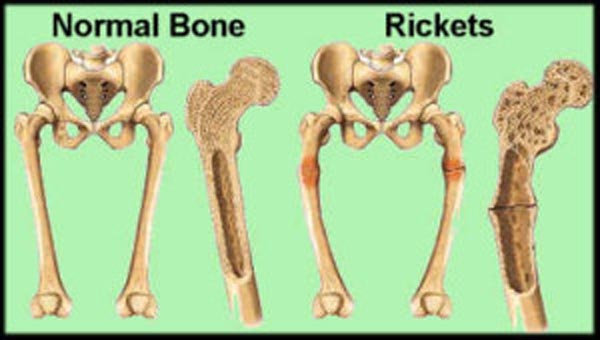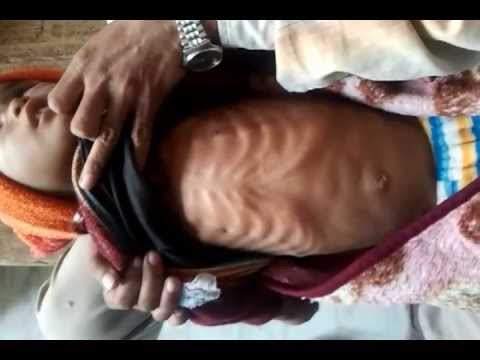It’s natural that most mothers want their child to grow and be normal and in this process keenly observe every little change that occurs in their child. I am a mother too and therefore I felt the need to write a blog on the issue commonly faced by children –Rickets
It is a deficiency of Vit D, calcium or phosphorus also known as Osteomalacia. It involves softening and weakening of bones in children due to deficiency of Vit D. The softening occurs due to loss of Calcium in the skeleton as a result of which bones become flexible and gradually are moulded by forces such as bearing weight, that are exerted on them thus leading to deformities of the body structure.
There are various types of rickets:
- Nutritional Rickets- Due to dietary deficiency of calcium, Vit D. You can correct it with including good sources of Calcium, Vit D, phosphorus.
Sources of Vit D include sunlight, fatty fish, milk, mushrooms
Sources of Calcium include Milk and products, gingelly seeds, Ragi, tofu, soy milk, figs, rajgeera (Amaranth seeds), Almonds, figs etc.
Sources of phosphorus include milk and products, ricebran, pulses and legumes, rajgeera(amaranth seeds), pumpkin seeds, colocasia leaves, gingelly seeds, carrot , bajra, maize etc.
- Hypophosphatemic Rickets- As the name suggests this particular form of Rickets is caused due to low levels of phosphate. Bones become painfully soft and pliable. It is caused by a genetic dominant X-linked defect in the ability for the kidneys to control the amount of phosphate excreted in urine. It is not caused by Vit D Deficiency. Children suffering from this type of Ricket show obvious symptoms by the time they are 1 year of age. Treatment is generally through nutritional supplementation of phosphate and active form of Vit D.
- Renal Rickets- Caused by a number of kidney disorders. Persons suffering from kidney disorder have decreased ability to regulate amounts of electrolytes lost in urine which includes electrolytes like calcium and phosphate. Thus, these individuals develop symptoms similar to those of rickets
Treatment includes correcting the leading cause of renal disorder
Symptoms include
- Bone pain/tenderness
- Dental deformity
- Delayed formation of teeth
- Decreased muscle strength
- Impaired growth
- Short stature
- Skeletal deformities- bow legs
- rachitic rosary(rib cage abnormalities)
- Tetany i.e. involuntary muscle contraction) or seizures in severe cases
Treatment/ Prevention:
For Nutritional Deficiency Rickets
- Correcting nutritional deficiencies by incorporating more of Calcium, phosphorus and Vit D 3 sources
- New mothers have to be advised Vit D supplementation to their new borns as breast milk is low in Vit D especially with regards to low birth weight infants
- Gradual administration of oral doses of Vit D after consulting a doctor
For hypophosphatemic rickets and kidney/renal Rickets
Need to consult doctors and get the underlying cause corrected.
1) Skeletal deformities- bow legs

2) rachitic rosary(rib cage abnormalities)





When I was more youthful I used to have terrible leg spasms around evening time, my mom use to need to rub my legs, to prevent me from crying, she took me to the Doctors, he said that it was developing agonies, that my body was becoming quicker than my body could modify. Presently I’m more seasoned I experience the ill effects of frailty, and vitamin D lack, my safe framework is low